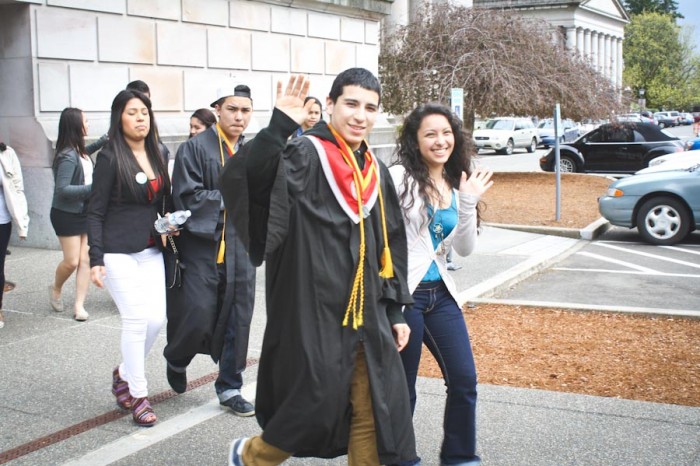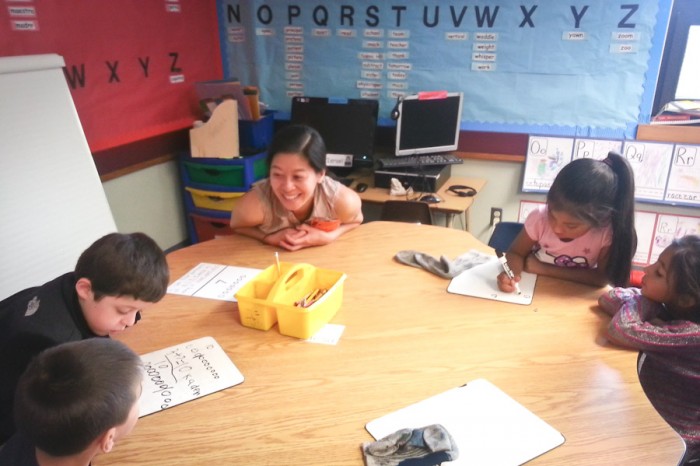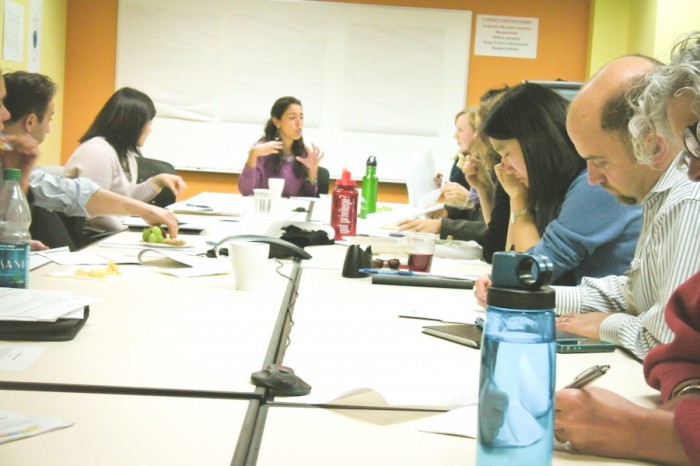
Growing up in a suburb of Seattle, I can count on my right hand the number of times I had a teacher who I felt I could relate to. Almost all of my teachers, though wonderful, were white Americans who didn’t understand my experience as a child with immigrant parents from Iran. They struggled in supporting me to integrate my identity into my educational experience.
In second grade I had an Asian American teacher and although our ethnic backgrounds differed, for the first time I felt like she understood me. She made me feel special for speaking another language, made my parents feel comfortable in the school, taught me history from around the world, and most importantly, made me believe that one day I could be like her: smart, confident, and simultaneously proud of who I am and where I come from.
Twenty-five years later, there are exponentially more students with an experience similar to mine. But sadly, not much has changed in our teacher demographics. Nationwide, our teachers of color hover at only eighteen percent of the workforce. In Washington state, where I work to improve education for immigrants and their children, the gap is even starker. Only eight percent of teachers are teachers of color, while projections estimate that by 2025 a forth of our children will be English language learners (ELLs).
To make things all the more complex, our state has one of the widest opportunity gaps — only a little over half of our African-American, Native American, Pacific Islander, and ELL students are graduating from high school.
This gap makes it clear that the extent to which students feel a connection between who they are and what they are learning, determines whether or not they will stay engaged. Having teachers in the classroom who understand the context of the communities students come from aids, how they make education relevant and valuable to students of color. I know this from my personal experience, as well as from the many students and families I have had the opportunity to hear from in my career working on education in a grassroots organization. In describing her frustration one immigrant parent reported, “Although teachers might do some cultural training or read about a culture, do they really get it? They need someone in there who actually gets it.”
Yet, with the emphasis on improving test scores and meeting outcomes to close this gap, the strategy of increasing teacher diversity to raise student achievement is sometimes overlooked.

There have been a number of speculations about what’s behind the low recruitment and retention of diverse teachers including rising costs of higher education and quality of life factors of the profession, such as low teacher pay and long hours. But the biggest problem, in my personal view, is that schools struggle with establishing culturally welcoming environments for teachers of color. Instead these teachers often feel isolated and challenged to authentically make curriculum and classrooms relevant to students from their communities.
Though this paints a grim picture, I believe we are at a crossroads.
We can either reform our education system to reflect the vibrancy and assets of our diverse demographic, or continue with a Eurocentric system of education that resembles the needs of our population 40 years ago.
With a strong commitment to the former, a coalition of advocates for ELL students have come together to build a cohort of new, diverse teachers. This pilot project is part of a broader community effort called the Road Map Project focused on closing the opportunity gap in the south part of our county through collective impact. In partnership with the state’s Professional Educator Standards Board and seven local school districts, we are building an alternate career route for diverse and bilingual school district employees who work with students to become credentialed as teachers. These individuals are recruited directly by the school district, provided with scholarships and support as they progress through a teacher training program, and then are guaranteed employment within local schools. Developing a cohort of candidates to go through this program together establishes the collective support they need to ease feelings of isolation. The goal is that by the end of two years we will have 80 highly-trained newly credentialed teachers from a variety of backgrounds.
The need for a project like this was driven by the unique demographics of our region. South King County has experienced a high influx of immigrant and refugees over the last two decades. There are over 160 languages spoken in the region and almost forty percent of our incoming kindergarteners are labeled as English language learners, making South King County an emerging majority-minority region.
This demographic change motivated parents and communities to be vocal about how schools can best meet the needs of their children. This included a demand for more bilingual programs backed up by research which demonstrates the most effective ways to educate and support ELL students is through dual language classrooms. Yet many of our district leaders report that they struggle to find the staff that are credentialed as teachers and can teach in multiple languages.

Why focus on para-educators? In many school districts, para-educators represent a significantly more diverse pool of employees that we can draw from to grow new teachers. Para-educators or instructional aides, many of whom are bilingual and bicultural, work directly in the classroom with students, have exposure to instructional practice, and a passion for teaching. These individuals, many of whom are immigrants with degrees and experience from their home countries, lack the opportunity and pathway for career advancement into the teaching profession.
Yibe Gebre, a bilingual para-educator with a PhD from Eritrea says that when he came to the U.S. he attempted to enter his field of study but hit a brick wall. He got a job as a para-educator because he loves teaching students yet feels that even with a PhD the path to becoming a teacher is so complicated, time-consuming, and costly that he gave up. With this new program, Yibe can potentially pursue a teaching credential that will take his prior degree and experience into account and adequately support him along the path.
In addition to cultivating new and more diverse teachers that match our student demographics, this effort to support para-educators in becoming teachers will also encourage local teacher colleges to develop alternative programs to meet the needs of diverse populations and grow the type of local teachers, like Yibe, that districts and communities are demanding. As a result of legislation enacted in 2014, the lessons and innovative efforts piloted in South King County will also be included in a set of recommendations to the state legislature on supporting career pathways for para-educators, allowing us to scale this effort across the state.
Getting this project underway puts South King County on the cutting edge of addressing an issue the nation has been struggling to get right. The hopeful outcome: local teachers supported by one another who are committed long-term to the achievement of our diverse students, more capacity to implement bilingual best practices for ELL populations, and students, like myself, who can look to the front of the classroom to see a teacher who makes them feel proud of who they are so they are set up to lead and achieve.
This post was first published in Education Week.


This topic is so critical and I’m happy to see it being brought to the forefront. The work you have done to address diversifying teachers is remarkable. What an exciting project and a great piece!
The work you have done is magnificent and this is a great piece.
Very well done.